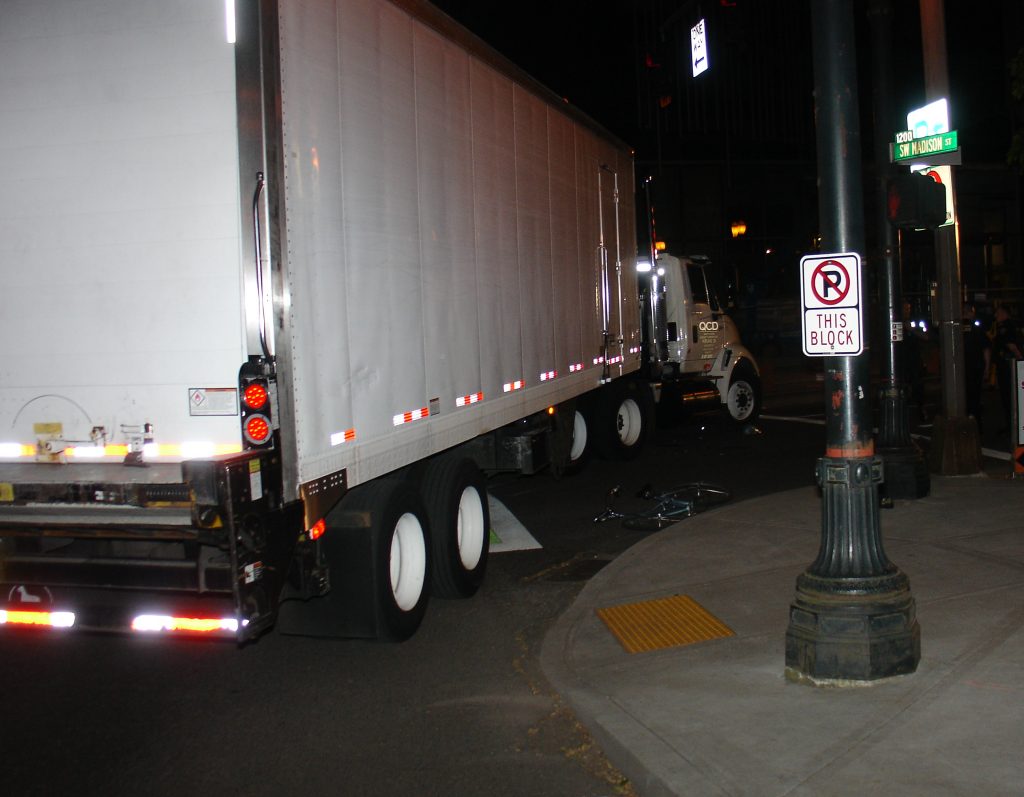What do Tracey Sparling, Brett Jarolimek, Kathryn Rickson, Mark Angeles and Tamar Monhait have in common? All were killed in collisions with commercial trucks on Portland’s streets. As a mother, daily bicycle commuter and lawyer for two of these families, this deeply concerns me. These trucks — semi-trucks, dump trucks, tow trucks and garbage trucks — have a greater propensity than other smaller vehicles to cause serious injury and death, particularly when they make a right or left turn across a cyclist’s path. In these situations, the inquiry often focuses on the driver’s conduct. However, it is important to remember that these vehicles are commercial vehicles, owned by profit-driven companies and operated by company employees. These companies have considerable control over the hiring and training of their truck drivers and the equipment on their trucks. In some cases, drivers who apply for positions with these companies are inexperienced, poorly trained or not trained at all in how to drive large heavy vehicles. Depending on the truck’s weight, a commercial driver’s license may not be required. In the same vein, trucks may not be outfitted with the number and types of mirrors sufficient to allow drivers to see cyclists.
The law requires that every person (and company) use reasonable care to avoid harming others. Oregon Uniform Jury Instruction 20.02. Therefore, companies whose businesses involve running commercial trucks on Portland’s streets should use reasonable care in hiring, training and supervising their drivers and in outfitting their trucks. Such reasonable care includes either hiring experienced drivers or sufficiently training them by writing and enforcing driving rules to ensure that company drivers operate their vehicles safely. Specifically, companies need to teach drivers of large heavy trucks about ORS 811.050, which requires drivers to yield the right of way to a cyclist riding in a bicycle lane. ORS 811.050 requires motorists to yield to cyclists riding in bicycle lanes when the motorist is making either a left or a right turn. Separately, commercial vehicle drivers need to be trained that ORS 811.350, which requires drivers to yield to approaching vehicles, including bicycles, that are so close as to constitute an immediate hazard. A bicycle is defined in Oregon’s Vehicle Code as a vehicle and a cyclist riding on a public way has the same rights and duties as the driver of every other vehicle (ORS 814.400).
To fulfill their duty of reasonable care, companies need to train their employee drivers to watch for cyclists, particularly in areas designated for bicyclists, and to give them the tools to do so. One important tool to help drivers see cyclists when making turns are mirrors — spot mirrors, west coast mirrors and fender mirrors. Companies need to invest in these mirrors and train their drivers how to use them as a tool to look for bicyclists when making left and right turns especially on streets with high bicycle traffic, such as greenways and streets with bicycle lanes.
Only when the owners and operators of large and potentially lethal trucks take reasonable care to ensure their drivers are knowledgeable about the law and required to follow it, can Portland cyclists and their families be assured that commercial drivers know the laws and are watching out for vulnerable road users where those users have the legal right of way.

